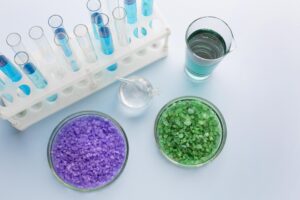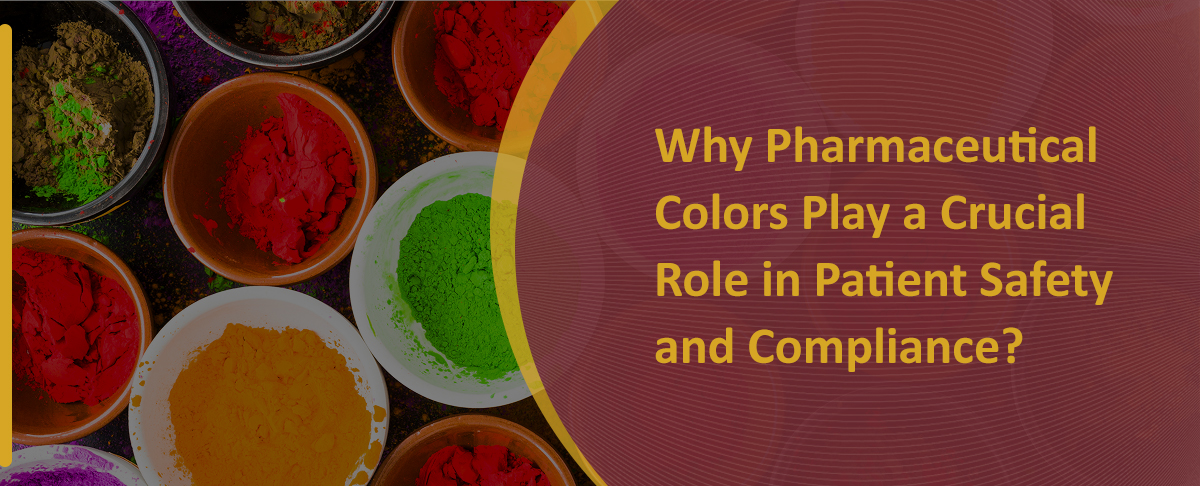Food dyes are widely used to make pharmaceutical products more appealing to consumers. The main reason for adding pharmaceutical dyes is to make products more appealing. This also helps patients tell different medicines apart. All right! In this blog post, we will explore different types of pharmaceutical dyes.
Different pharmaceutical dyes are available and widely used in multiple applications, such as tablets, gelatine capsules, or syrups. Various pharmaceutical colors and pigments are used to add color to medicines, making products aesthetically appealing, enhancing palatability, and improving branding more efficiently.

What Are Pharmaceutical Dyes?
What are pharmaceutical colors or dyes? Pharmaceutical dyes are colors or colorants used in many pharmaceutical products. These include tablets, capsules, pills, ointments, and syrups. They are used to determine dyes and pigments for the pharmaceutical industry.
Coloring compounds are dyes and pigments that are particularly important colorants in pharmaceutical product applications. They ensure uniformity without compromising product quality and efficacy.
Why Pharmaceutical Dyes Are Used?
There are many reasons why pharmaceutical dyes or coloring agents are added to medicines. These include making products look better, helping to identify drugs, and improving branding and marketing. The following are some of the top reasons why colors are added to medicines or pharmaceutical dosage forms:
- Make Syrups Attractive
Pharmaceutical dyes are used to improve the look of syrups. They help patients and doctors tell one syrup from another quickly. For instance, orange-flavored syrup is produced from orange or yellow dyes.
- Ensure uniformity
Pharmaceutical dyes or colorants are often used to make pharmaceutical products look the same. This includes tablets, capsules, and syrups. These dyes or colorants can be soluble in water or solvents. They can be organic or inorganic and come in powdered or granular forms.
- Easy Identification
Pharmaceutical dyes help patients and doctors recognize and tell apart different forms and strengths of the same medicine.
- Brand development
Dyes help you add bright colors to medicine forms. They also build a strong brand identity and improve marketing efforts.
- Consistency
Adding pharmaceutical dyes is important. It helps ensure consistent color measurement and control. It also allows for even dye application during the process.
- Counterfeiting
Pharmaceutical colors are crucial in making products more tamper-proof and reducing drug counterfeiting.
- Protection from light
Pharmaceutical dyes protect photolabile compounds in the drug formulation from light degradation.
- Patient Compliance
Adding pharmaceutical colors to medicines or pharma dosage forms can help you increase patient compliance and therapy improvements.
Different Types of Pharmaceutical Dyes
There are various types of pharmaceutical dyes or colorants widely used to impart color to different pharmaceutical dosage forms. Here are some of the most commonly used pharmaceutical colors:
1. Water-soluble dyes
What are water-soluble dyes? Water-soluble dyes include quinoline yellow and allura red, which can be dissolved thoroughly in water.
2. Pigments
These are pigments or pharmaceutical dyes that don’t dissolve in water. Iron Oxide is an example of a pharmaceutical pigment.
3. Natural or Animal-Based Colors
Natural or animal-based colors are dyes derived from natural sources, such as trees, plants, vegetables, minerals, or animals. These forms of dyes or colors are most compatible with human consumption. Cochineal and Curcumin are the best examples of natural and animal-based colors.
4. Organic dyes
Organic dyes, such as synthetic dyes, are solvent-soluble and derived chemically. These organic dyes are most commonly used to provide deeper colors. For example, azo dyes are an example of organic dyes.
5. Inorganic mineral colors
These dyes, colors, or colorants are mineral-based pigments used in pharmaceutical applications. Titanium oxide is an example of an inorganic mineral dye or color.
6. Lakes
Lake dyes or colors refer to aluminum salts of water-soluble dyes. These lakes can be insoluble in other solvents. Red 40 Aluminum Lake is an example of lake colors used for coloring drugs or medicines.
Conclusion
In conclusion, different types of pharmaceutical dyes add color to various forms of medicine, like tablets and syrups. Pharmaceutical companies should use high-quality dyes and pigments to ensure safety.
If you run a pharmaceutical business and need high-quality dyes or pigments, Hridhan Chem is a great choice for you. The company is a top maker and seller of FDA-certified dyes and pigments. These can be used in food, medicine, and cosmetics


